#Marguerite Marsh
Photo
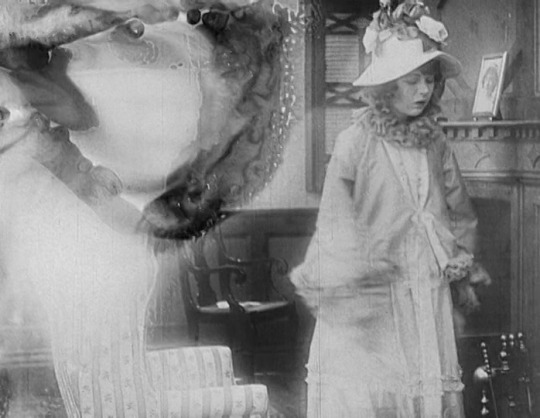
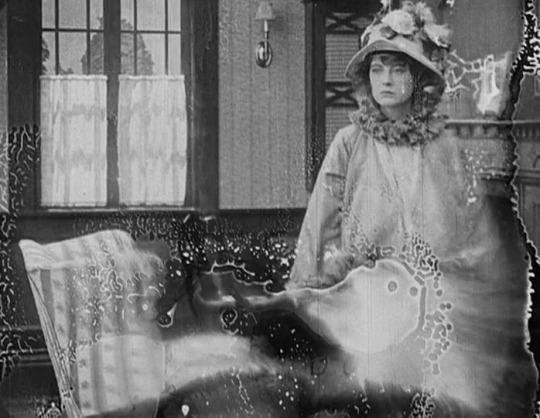
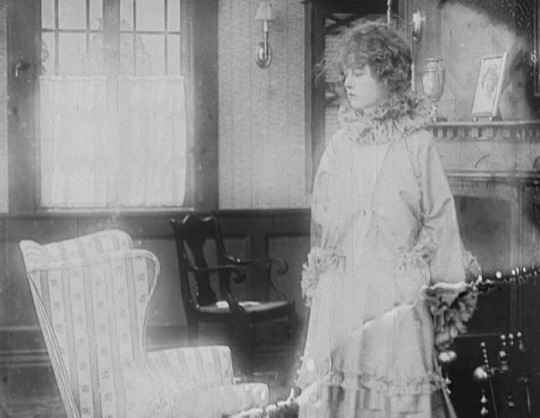
The Devil's Needle (Chester Withey, 1916)
32 notes
·
View notes
Text
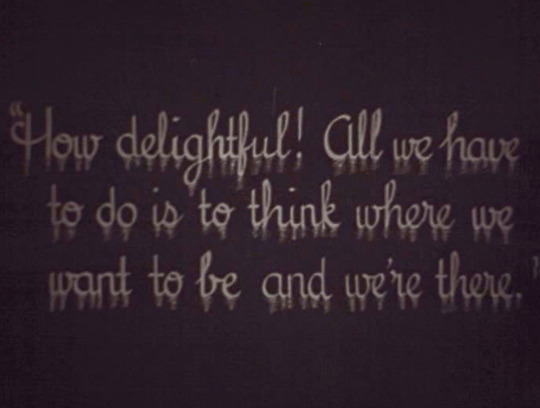

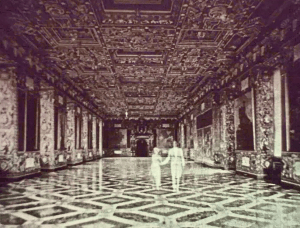


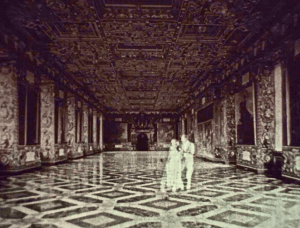
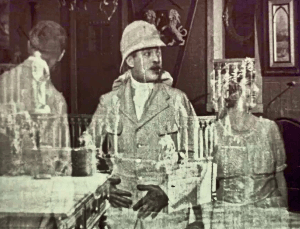
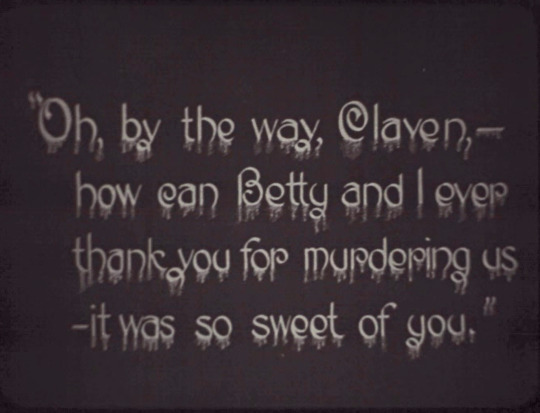
The Phantom Honeymoon (1919, J. Searle Dawley)
#the phantom honeymoon 1919#marguerite marsh#marguerite loveridge#vernon steele#hal clarendon#actually loved “claven (played by hal clarendon)” more than captain lambert#favorite
2 notes
·
View notes
Text

Marguerite Marsh ❤
#early silent film#silent film#silent era#silent actress#marguerite marsh#silent cinema#1920s cinema#silent film actresses#1910s movies#vintage beauty
14 notes
·
View notes
Text

welcome to ourblued ; a semi selective multimuse roleplay blog for both canon & original characters from various mixed media ! please read the rules to this blog before interacting ! promo template goes to @jessource. ( written by neptune, 21+, she/her, pst. )
RULES + OLDER MUSES. MEMES. BANNED.
with close affiliations , @naitfall / @knightinsourarmor - @whispcrcr - , could be you as well !
NEWER MUSES.
collette mendoza , played by genesis rodriguez . 36 , tour guide at a museum . bisexual , open & active .
valeria cardoza , played by karla souza . 36 , principal at a middle school . pansexual , open & semi active .
callisto holmes , played by brigette lundy paine . 26-29 , scavenger , avid believer in the rebellion , amateur pilot . pansexual , open & active , they / them pronouns .
hange zoe , animated . 29-31 , 14th commander of the survey corps , titan extraordinaire . heterosexual , open & active , they / them pronouns .
mei mei , animated . 33 , jujutsu sorcerer . open & active .
mindy meeks martin , played by jasmin savoy brown . 19-20 , former student at woodsboro high , college student at blackmore university , 1/3 of the ghostface killers . lesbian , open & active .
ethan landry , played by jack champion . 19-20 , student at blackmore university , 2/3 of the ghostface killers . bisexual with male lean , open & active .
petra ral , animated . 22 , hand picked soldier of the survey corps by levi ackerman himself , placed in the special operations squad . bisexual , open & active .
craig tucker , played by tanner buchanan . 18-21 , college student at park county community college , member of the boys only club . homosexual , open & active .
stan marsh , played by cameron cuffe . 20-22 , college student at park county community college , member of the south park boys only club . bisexual , open & active .
anika kayoko , played by devyn nakoda . 21 , student at blackmore university , 3/3 of the ghostface killers . lesbian , open & active .
barry berkman , played by bill hader . 44 , former marine turned hitman , amateur actor . bisexual , open & active .
billie callahan , played by brigette lundy paine . 28 , former assistant to roman godfrey , assistant to roman roy at waystar royco . pansexual , open & active , they / them pronouns .
marlene alraune , played by annie murphy . 34 , former museum employee , corporate executive , former social worker , former secretary , archaeologist , former student , wife . heterosexual , open & active .
maria hill , played by cobie smulders . 44 , former deputy director of shield , former commander of shield . pansexual , open & active .
dana d'angelo , played by emilija baranac . 28 , assistant in new market agro department in synthia east . heterosexual , open & active .
sydney adamu , played by ayo edebiri . 27 , sous chef of the bear . formerly owned a catering business called sheridan . pansexual , open & active .
tiffany jerimovich , played by gillian jacobs . 40 , ex-wife of richie jerimovich , mother to eva . heterosexual , open & active .
shiu kong , animated . late 30's - early 40's , a handler for curse users . close partner of toji fushiguro . bisexual , open & active .
anitta jo , aimee lou wood . 28 , former receptionist at a law firm , current bartender . pansexual , open & active .
marguerite blanchet , mimi keene . 25 , professor’s assistant . pansexual , open & active .
celestina anders , chloe cherry . 26 , self employed . pansexual , open & active .
himeno , animated . early to mid 20's , public safety devil hunter . bisexual , open & testing .
jeremiah adelman , milo manheim . 23 , college student majoring in film studies . pansexual , open & active .
floribeth bautista , chie filomeno . 27 , social media influencer . bisexual , open & active .
6 notes
·
View notes
Note
Happy STS! I hope you’ve had a great week :D do any of your OCs have any sentimental items? If so, what are they and why are they sentimental?

Hi, Kraken. Happy STS. I hope you are having a lovely day! And thank you so much for the question.
Although Cold as Ice is my main WIP, I think I will answer this for Anabelle Vasser of Pale Fire. Anabelle is the main protagonist of that manuscript.

Anabelle Laure Marguerite Vasser de Spacci is an Olessan Shadow Blade. She was originally born Anabelle Jennette Marguerite Blaise de Spacci. She was born in a village in the Spacci region. When she was young, her mother developed "Ague" or malaria. Her father moved his family to Olessa in hopes to access more prominent physicians, and soon after, her mother passed on.
Anabelle would slip the ring off of her mother's finger and hide it from her father, as she feared he would sell it to pay the debts created by his wife's healthcare.
It wasn't long after that her father was mugged and murdered by brigands. They would toss his body in the marsh that Olessa is built upon.
As Annie knew she would be sent to the orphanage and would be mistreated, she decided to take her changes on the streets. Before she left, she retrieved her mother's wedding ring from a hiding place. It's the only thing that she has left of her family.
She wears this on a golden chain. It's the type of item that she tries to never take off. Without it, she feels naked.
#storyteller saturday#sts#oc: anabelle vasser#wip: pale fire#cw: death#cw: murder#my ocs#writeblr#writeblr community
3 notes
·
View notes
Video
youtube
Remembering Emily Webster from Betsy Tacy, the real life Marguerite Marsh.
5 notes
·
View notes
Text

"These are all that remains of the countless wind pumps
and windmills whose white sails revolved over the marshes of
Halvergate and all along the coast until in the decades following
the First World War, one after the other, they were all shut
down. It's hard to imagine now, I was once told by someone
who could remember the turning sails in his childhood, that
the white flecks of the windmills lit up the landscape just as a
tiny highlight brings life to a painted eye. And when those
bright little points faded away, the whole region, so to speak,
faded with them."
(re: the Battle of Solebay, 1672):"At that date there can have been only a few cities on earth that numbered as many souls as were annihilated in sea-battles of this kind. The agony that was endured and the enormity of the havoc wrought defeat our powers of comprehension, just as we cannot conceive the vastness of the effort that must have been required - from felling and preparing the timber, mining and smelting the ore, and forging the iron, to weaving and sewing the sailcloth - to build and equip vessels that were almost all predestined for destruction."
"Like beads on an abacus designed to calculate infinity, cars glided along the lanes of the motorways, while the ships moving up and down river appeared as if they had been halted for ever."
"No matter whether one is
fying over Newfoundland or the sea of lights that stretches from
Boston to Philadelphia after nightfall, over the Arabian deserts
which gleam like mother-of-pearl, over the Ruhr or the city of
Frankfurt, it is as though there were no people, only the things they
have made and in which they are hiding. One sees the places where
they live and the roads that link them, one sees the smoke rising
from their houses and factories, one sees the vehicles in which they
sit, but one sees not the people themselves. And yet they are present
everywhere upon the face of the earth, extending their dominion by
the hour, moving around the honeycombs of towering buildings
and tied into networks of a complexity that goes far beyond the
power of any one individual to imagine, from the thousands of
hoists and winches that once worked the South African diamond mines to the floors of today's stock and commodity exchanges,
through which the global tides of information fow without cease.
If we view ourselves from a great height, it is frightening to realize
how little we know about our species, our purpose and our end,
I thought, as we crossed the coastline and few out over the
jelly-green sea."
"Korzeniowski, who travelled onward to see Marguerite
Poradowska in Brussels immediately after arriving in Ostend, now
saw the capital of the Kingdom of Belgium, with its ever more
bombastic buildings, as a sepulchral monument erected over a
hecatomb of black bodies, and all the passers-by in the streets
seemed to him to bear that dark Congolese secret within them.
And indeed, to this day one sees in Belgium a distinctive ugliness,
dating from the time when the Congo colony was exploited
without restraint and manifested in the macabre atmosphere
of certain salons and the strikingly stunted growth of the popu-
lation, such as one rarely comes across elsewhere."
"We may draw from this the conclusion
that it was precisely Casement's homosexuality that sensitized
him to the continuing oppression, exploitation, enslavement and
destruction, across the borders of social class and race, of those
who were furthest from the centres of power."
"On the 20th of June the
Celestial King took his own life. Hundreds of thousands followed
his example, either out of loyalty to him or for fear of the
conquerors' revenge. They committed self-slaughter in every con-
ceivable way, with swords and with knives, by fire, by hanging, or
by leaping from the rooftops and towers. Many are even said to
have buried themselves alive. The mass suicide of the Taipingis is
without historical parallel. When their enemies broke through the
gates on the morning of the roth of July, they found not a soul
alive. But the city was filled with the humming of flies. "
"If one flies over the Amazon Basin or over Borneo and sees the mountainous palls of smoke hanging, seemingly motionless, over the forest canopy, which from
above resembles a mere patch of moss, then perhaps one can
imagine what those fires, which sometimes burned on for monchs,
would leave in their wake. Whatever was spared by the flames
in prehistoric Europe was later felled for construction and ship-
building, and to make the charcoal which the smelting of iron
required in vast quantities. By the seventeenth century, only a few
insignificant remnants of the erstwhile forests survived in the
islands, most of them untended and decaying. The great fires were
now lit on the other side of the ocean. It is not for nothing that
Brazil owes its name to the French word for charcoal. Our spread
over the earth was fulled by reducing the higher species of vegeta-
tion to charcoal, by incessantly burning whatever would burn.
From the first smouldering taper to the elegant lanterns whose light
reverberated around eighteenth-century courtyards and from the
mild radiance of these lanterns to the unearthly glow of the sodium
lamps that line the Belgian motorways, it has all been com-
bustion. Combustion is the hidden principle behind every artefact
we create. The making of a fish-hook, manufacture of a china cup,
or production of a television programme, all depend on the same
process of combustion. Like our bodies and like our desires, the
machines we have devised are possessed of a heart which is slowly
reduced to embers. From the earliest times, human civilization
has been no more than a strange luminescence growing more
intense by the hour, of which no one can say when it will begin to
wane and when it will fade away. For the time being, our cities still
shine through the night, and the fires still spread."
"
Perhaps we all lose our sense of
reality to the precise degree to which we are engrossed in our own.
work, and perhaps that is why we see in the increasing complexity
of our mental constructs a means for greater understanding, even
while intuitively we know that we shall never be able to fathom
the imponderables that govern our course through life. Does one
follow in Hölderlin's footsteps, simply because one's birthday
happened to fall two days after his? Is that why one is tempted
time and again to cast reason aside like an old coat, to sign onés
poems and letters "your humble servant Scardanelli", and to keep
unwelcome guests who come to stare at one at arm's length by
addressing them as Your Excellency or Majesty? Does one begin to
translate elegies at the age of fifteen or sixteen because one has
been exiled from one's homeland? Is it possible that later one
would settle in this house in Suffolk because a water pump in the
garden bears the date 1770, the vear of Hölderlin's birth? For when
I heard that one of the near islands was Patmos, I greatly desired
there to be lodged, and there to approach the dark grotto. And
did Hölderlin not dedicate his Patmos hymn to the Landgrave
of Homburg, and was not Homburg also the maiden name of
Mother? Across what distances in time do the elective affinities and
correspondences connect? How is it that one perceives oneself in
another human being, or, if not oneself, then one's own precursor?"
"Peering into the pantry; which held a particular fascination for me, my eye was caught by several jars of preserved fruit that stood on the otherwise empty shelves and by a few dozen diminutive crimson
apples on the sill of the window darkened by the yew tree ausid.
And as I looked on these apples which shone through the half egit
much as the golden apples likened in Proverbs to a word fit
spoken, the quite outlandish thought crossed my mind that the kindling, the jiffy bags, the fruit preserves, the seashells
and the sound of the sea within them had all outlasted me, and
that Michael was taking me round a house in which I myself had
lived a long time ago. But thoughts of this kind are dispelled as
speedily as they appear. At all events, I did not pursue them in
the years that have passed since then, perhaps because it is not
possible to pursue them without losing one's sanity."
"
When he was listening, he would tilt his head to one
side, smiling blissfully, but when he himself was speaking it was
as though he were desperately struggling for breath. Often his
face would contort into a grimace, the effort bringing beads of
perspiration to his brow, and the words came from him in a spas-
modic, precipitate manner that betrayed severe inner turmoil and
presaged, even then, that all too soon his heart would cease to beat.
When I now think back to Stanley Kerry, it seems incomprehen-
sible that the paths of Michael's life and mine should have
intersected in the person of that extraordinarily shy man, and that
at the time we met him, in I944 and in 1966 respectively, we were
both twenty-two. No matter how often I tell myself that chance
happenings of this kind occur far more often than we suspect,
since we all move, one after the other, along the same roads
mapped out for us by our origins and our hopes, my rational mind
is nonetheless unable to lay the ghosts of repetition that haunt me
with ever greater frequency. Scarcely am I in company but it seems
as if I had already heard the same opinions expressed by the same
people somewhere or other, in the same way, with the same words,
turns of phrase and gestures. The physical sensation closest to this
feeling of repetition, which sometimes lasts for several minutes and
can be quite disconcerting, is that of the peculiar numbness
brought on by a heavy loss of blood, often resulting in a tempo-
rary inability to think, to speak or to move one's limbs, as though,
without being aware of it, one had suffered a stroke. Perhaps there
is in this as yet unexplained phenomenon of apparent duplication some kind of anticipation of the end, a venture into the void, a
sort of disengagement, which, like a gramophone repeatedly
playing the same sequence of notes, has less to do with damage
to the machine itself than with an irreparable defect in its
programme. "
"
the curiously close relationship that existed, until well into the
twentieth century, between the history of sugar and the history of
art. For long periods of time there was little scope for an osten-
tatious display of accumulated wealth, and consequently the
enormous profits that accrued to the few families who grew and
traded in sugar cane were largely lavished on the building, furnish-
ing and maintenance of magnificent country residences and stately
town houses. It was Cornelis de Jong who drew my attention to
the fact that many important museums, such as the Mauritshuis
in The Hague or the Tate Gallery in London, were originally
endowed by the sugar dynasties or were in some other way
connected with the sugar trade. The capital amassed in the eigh-
tenth and nineteenth centuries through various forms of slave
economy is still in circulation, said de Jong, still bearing interest,
increasing many times over and continually burgeoning anew.
One of the most tried and tested ways of legitimizing this kind
of money has always been patronage of the arts, the purchase
and exhibiting of paintings and sculptures, a practice which today,
said de Jong, was leading to a relentless escalation of prices paid
at major auctions. Within a few years, the hundred million mark
for half a square yard of painted canvas will have been passed.
At times it seems to me, said de Jong, as if all works of art were
coated with a sugar glaze or indeed made completely of sugar,
like the model of the battle of Esztergom created by a confec-
tioner to the Viennese court, which Empress Maria Theresia, so
it is said, devoured in one of her recurrent bouts of melancholy."
"The only task FitzGerald finished and published in
his lifetime was his marvellous rendering of the Rubaiyat of the
Persian poet Omar Khayyam, with whom he felt a curiously close
affinity across a distance of eight centuries. FitzGerald described the
endless hours he spent translating this poem of two hundred and
twenty-four lines as a colloquy with the dead man and an attempt to
bring to us tidings of him. The English verses he devised for the
purpose, which radiate with a pure, seemingly unselfconscious
beauty, feign an anonymity that disdains even the least claim to
authorship, and draw us, word by word, to an invisible point where
the medieval orient and the fading occident can come together in a
way never allowed them by the calamitous course of history. For in
and out, above, about, below, /'Tis nothing but a Magic Shadow-Show,"
"Estates of this kind that enabled the ruling elite to imagine themselves surrounded by boundless lands where nothing offended the eye,did not become fashionable until the second half of the eighteenth century. Planning and executing the work necessary for an emparkment could take two or three decades. In order to complete
such a project it was usually necessary to buy parcels of land and
add them to the existing estate, and roads, tracks, individual farm-
steads, sometimes even entire villages had to be moved, as the
object was to enjoy an uninterrupted view from the house over a
natural expanse innocent of any human presence. It was for the
same reason that fences were replaced with broad, grass-covered
ha-has, which were dug out at a cost of many thousands of
working hours. Naturally, such an undertaking, with its consider-
able impact not only on the landscape, but also on the life of the
local communities, could not always be accomplished without
controversy. At the period in question, an ancestor of Earl Ferrers,
the present owner of Ditchingham Hall, having become embroiled
in a confrontation with one of his estate managers, dispatched him
with his gun, for which deed he was in due course sentenced to
death by his peers in the House of Lords, and hanged publicy
in London by a silken rope. - The least costly aspect of laying out
a landscaped park was planting trees as specimens or in small
groups, even if it was not seldom preceded by the felling of tracts
of woodland and the burning-off of unsightly thickets and scrub
that did not comply with the overall concept. Nowadays, given
that only a third of the trees planted at the time are still stand-
ing in most parks, and that more are dying each year of old age
and many other causes, we will soon be able to envisage once
more the Torricelli-like emptiness in which the great country seats stood in the late eighteenth century"
"Since the mid-Seventies there has
been an ever more rapid decline in the numbers of trees, with heavy
losses, above all amongst the species most common in England.
Indeed, one tree has become well nigh extinct: Dutch elm disease
spread from the south coast into Norfolk around 1975, and within
the space of just two or three summers there were no elms left alive
in the vicinity. The six elm trees which had shaded the pond in
our garden withered away in June 1978, just a few weeks after
they unfolded their marvellous light green foliage for the last time.
The virus spread through the root systems of entire avenues with
unbelievable speed, causing capillaries to tighten and leading to the
trees' dying of thirst. Even solitary trees were located with infallible
accuracy by the airborne beetles which spread the disease. One of
the most perfect trees I have ever seen was an almost two hundred-
year-old elm that stood on its own in a field not far from our house.
About one hundred feet tall, it filled an immense space. I recall that,
after most of the elms in the area had succumbed, its countless,
somewhat asymmetrical, finely serrated leaves would sway in the
breeze as if the scourge which had obliterated its entire kind would
pass it by without a trace; and I also recall that a bare fortnight later
all these apparently invincible leaves were brown and curled up,
and dust before the autumn came. "
"That
weavers in particular, together with scholars and writers with
whom they had much in common, tended to suffer from melan-
choly and all the evils associated with it, is understandable given
the nature of their work, which forced them to sit bent over, day
after day, straining to keep their eye on the complex patterns
they created. It is difficult to imagine the depths of despair into
which those can be driven who, even after the end of the
working day, are engrossed in their intricate designs and who are
pursued, into their dreams, by the feeling that they have got
hold of the wrong thread. On the other hand, when we consider
the weavers' mental illnesses we should also bear in mind that
many of the materials produced in the factories of Norwich in
the decades before the Industrial Revolution began
silk brocades and watered tabinets, satins and satinettes, camblets
and cheveretts, prunelles, callimancoes and florentines, diaman-
tines and grenadines, blondines, bombazines, belle-isles and
martiniques - were of a truly fabulous variety, and of an irides-
cent, quite indescribable beauty as if they had been produced by
Nature itself, like the plumage of birds. - That, at any rate, is
what I think when I look at the marvellous strips of colour in
the pattern books, the edges and gaps filled with mysterious
figures and symbols, that are kept in the small museum
of Strangers Hall, which was once the town house of just
such a family of silk weavers who had been exiled from France."
1 note
·
View note
Text

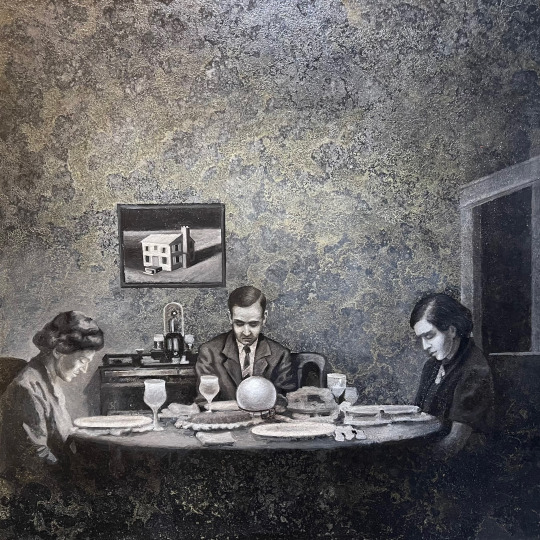



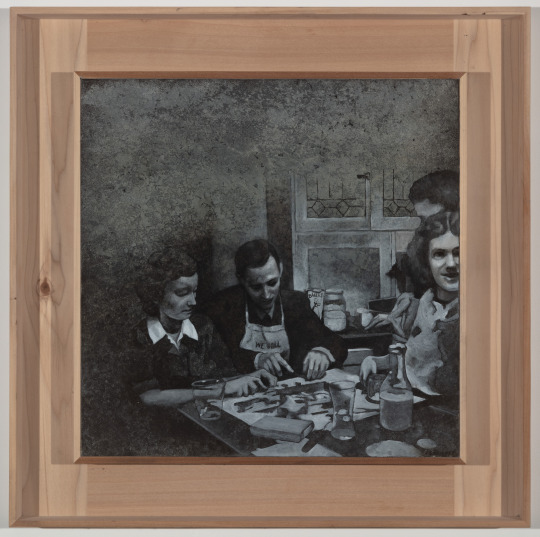
ALEXANDER STOLIN, born and raised in Kiev, Ukraine (under the former Soviet Socialist Republic), where he received intensive training and a master of fine arts degree in his homeland’s traditional art academies. As art critic D. Eric Bookhardt suggested in 2002, “Stolin is more accomplished than he is famous.” His art, often exhibited in thematic series that incorporate a variety of media, ranges from intimate portraits to large-scale murals (one measuring twelve feet by seventy-two feet). He has worked on a progressively larger scale, most recently designing and painting projects for the Louisiana film industry. Stolin’s technically proficient and complexly layered art reflects a unique fusion of the academic training he received in Kiev and his evolving response to the very different culture, lifestyle, and subject matter he has discovered in New Orleans, Madisonville, and the Gulf South.
Stolin’s Face to Face series of portraits, completed from 2000 to 2002, featured New Orleans artists including Douglas Bourgeois, Jeffrey Cook, and Margaret Witherspoon and the architect Jimmy Lamantia, as well as his Madisonville neighbors, including Bud Goldate, Hascal Agee, and Willie Lee Marshall. These were important works, exhibited at the Ogden Museum of Southern Art when it opened in 2003. “There are portraits—and there are portraits,” said Bookhardt, referring to the series. “The best tell us something essential about the subject. The rest are just pictures.” Observing that Stolin’s work “offers insights into the processes of perception,” Bookhardt concluded that “his images distill something of the subject’s life essence filtered through the eye and hand of an unusually skilled, sensitive, and increasingly accomplished painter.” A diversified range of works followed, including an exploration of his childhood memories of Kiev, enhanced by family photographs and a series of letters from Kiev to relatives in America. Stolin juxtaposed the historic and vernacular architecture of Kiev with New Orleans buildings of the same period, as is evident in a painting such as Waiting II. Another series explored the marshes and landscapes of the north shore of Lake Pontchartrain. Stolin also painted genre scenes of small-town life in Madisonville, becoming, in his own way, a southern regional painter. Works in this series included Bayou Lacombe, Breakfast at Badeaux’s, and Jr. High at Madisonville, which featured a painted image of the school’s retired bus and metal from the actual bus, fusing art, history, memory, and reality.
The art Stolin began to create in New Orleans demonstrated his technical skills, knowledge of art history, and the evolving range of his subject matter, reflected from one series and exhibition to the next, yet it was challenging for critics to classify his work. This was evident in the series Stolin exhibited during his first decade in the city, beginning with Byzantium on the Bayou (1993–1994), which combined historical Byzantine art references with New Orleans and Mardi Gras subjects, such as Mardi Gras Madonna and Adoration of St. Gator. In his Midnight Dessert series (1995–1997), he created works such as Tea in Manhattan and Rembrandt and Nathan, a large painting that Bookhardt described as “a vision of Rembrandt and various Dutch masters promenading down the sidewalk past Nathan’s Deli in New York.” Following that, he completed The Water Series (1998–1999), featuring reflective and heavily worked surfaces in paintings such as Reflections #2 and Study of Fish and Swimmers.
Stolin exhibited for years with the Marguerite Oestricher Gallery in New Orleans. After its closing he became associated with the Taylor-Bercier Gallery in New Orleans and continues to exhibit his art across Louisiana. His works are included in the collection of the Ogden Museum of Southern Art in New Orleans as well as in numerous corporate and private collections.
#alexander stolin#ukraine artist#contemporary art#history art#oil art#jonathan ferrara gallery#jfg artist
1 note
·
View note
Text
8 dicembre … ricordiamo …
8 dicembre … ricordiamo …
#semprevivineiricordi #nomidaricordare #personaggiimportanti #perfettamentechic #felicementechic #lynda
2019: Antonio Dimitri, Antonio Costanzo Dimitri, noto anche con gli pseudonimi Antonio Di Mitri, Tony Di Mitri, Tony Dimitri e George Stevenson, attore e cantante italiano. (n. 1931)
2019: René Auberjonois, René Murat Auberjonois, attore e doppiatore statunitense. (n. 1940)
1999: Pupella Maggio, nome d’arte di Giustina Maria Maggio, attrice teatrale e attrice cinematografica italiana. Nacque…

View On WordPress
#8 dicembre#Antonio Costanzo Dimitri#Antonio Dimitri#Cathy Downs#Eric Dasmond#George J. Lewis#George Stevenson#Giustina Maria Maggio#Gladys Anna Clare#Gladys George#John Lennon#John Winston Lennon#John Winston Ono Lennon#Louis Bert Lindley#Lutha Adler#Luther Adler#Margaret Marsh#Margarita Loveridge#Marguerite Loveridge#Marguerite Marsh#Morti 8 dicembre#Morti oggi#Pupella Maggio#Reginald Sheffield#René Auberjonois#René Murat Auberjonois#Rosita Toros#Slim Pickens#Tony Dimitri
3 notes
·
View notes
Photo


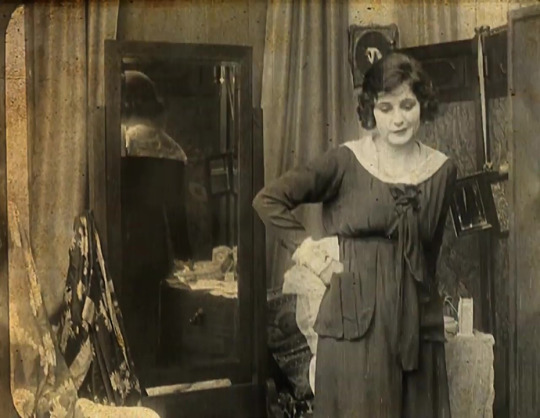

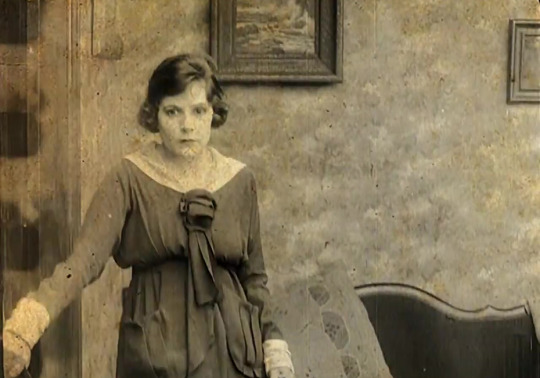

the devil’s needle (us, withey 16)
23 notes
·
View notes
Text
The Doll-House Mystery (1915) A Silent Film Review
The Doll-House Mystery (1915) A Silent Film Review
A family’s life is thrown into chaos when the daughter of the house purloins a stack of valuable bonds to paper her playhouse. The very essence of “Well, that escalated quickly!” occurs when an ex-con neighbor is blamed for the theft and goes on the lam.
(more…)
View On WordPress
2 notes
·
View notes
Photo


The Devil's Needle (Chester Withey, 1916)
28 notes
·
View notes
Text

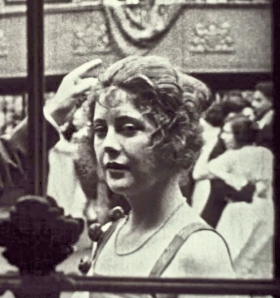

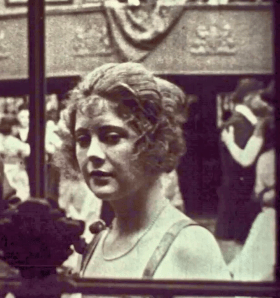

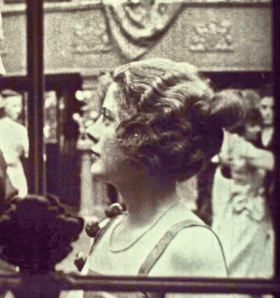
Marguerite Marsh Loveridge in The Phantom Honeymoon (1919)
#the phantom honeymoon 1919#marguerite marsh#marguerite loveridge#chubby cheeked pretty sister of my lady
0 notes
Text
So ok I talked about the Mold before in resident evil and who else has been infected the same way Ethan was. So I was thinking, yes Mia is among the infected the longest, then the bakers, right?
So I was thinking the the Baker victims are also definitely infected! Like not just because they “insert” (?) the Mold or “gift” from Eveline when they’re dead, like I’m thinking just how infected the entire Baker residence is! And even the swamp/marsh area from where the tanker ship Eveline, Mia and Alan the director (’member him?) was when they were traveling.
I think back to the Sewer Gators, those 3 guys who were filming a horror show, and the way they died! Andre died immediately after being staked through the mouth, damaging his head! The 2 had been tortured by mutant Mia (if you guys remember one of the Found Footage style trailers back in 2016) in the Guest House and Pete sacrificed himself to try to save Clancy. He died from stabbing, though I have a hunch his body was turned to the Mold monster.
Clancy had the hardest time. He was in one of the houses and being “fed” by Marguerite. Even if Clancy never ate them, he was in contact with a very grungy, dirty house so likely he had the same gradual infection like Ethan did! He never turned because of what Lucas did to him!
My point: BSAA has A LOT on their plate to clean up!
Point 2: Zoe Baker! FRIGGIN ZOE BAKER definitely has the same mutation now, like Mia’s and Ethan’s! I can’t imagine living like that knowing the remnants remain despite being “vaccinated” by Blue Umbrella.
13 notes
·
View notes
Photo

Marguerite Zorach, Frozen Marshes at Dawn, c.1957
5 notes
·
View notes
Text
Happy birthday, Marguerite Marsh! Marguerite was the model for Emily of Deep Valley and I have had the honor of laying flowers on her grave in Mankato. I’m very much an Emily and turn to her book when I need to muster my wits and try to break out of a depression spiral.
Marguerite had a short life, passing away in her 30s after the birth of her first child, but also an adventurous one: she went overseas with the YMCA in World War 1 and served in France. Read some of her letters home: https://betsytacysdeepvalley.wordpress.com/2018/11/25/home-over-there-marguerite-marsh-and-the-ymca-in-the-great-war/


15 notes
·
View notes